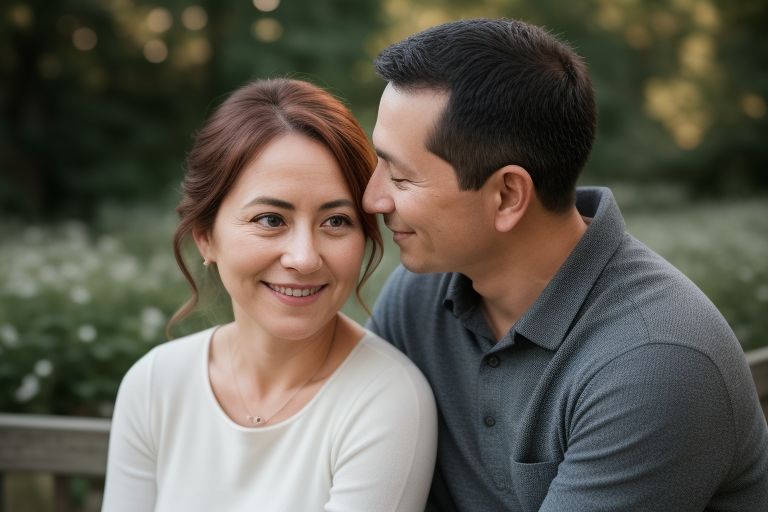#Difference between lust and love #Can lust turn into love #Emotional vs physical connection #Signs it’s more than lust #How love develops over time #Kapoda
It’s a classic scenario: two people meet, feel an immediate attraction, and things quickly heat up. But as time goes on, you might start asking yourself, “Is this just lust, or is something deeper developing?” Relationships that start with intense physical attraction can often blur the lines between lust and love. It’s easy to assume that what starts as an exciting physical connection will eventually fizzle out, but is it possible for lust to transform into something deeper and more meaningful? Can it lead to lasting love?
In this article, we’ll explore the dynamic between lust and love. We’ll discuss how lust evolves into emotional connection, whether physical chemistry can spark lasting relationships, and how couples can navigate this transition from the physical to the emotional. Let’s dive into how lust can grow into love and whether those relationships have the potential for long-term commitment.
The Problem: Is Lust Just Physical or Can It Become Love?
Lust is powerful. It’s the instant attraction that we feel when we meet someone new, the butterflies, the irresistible pull. But it’s also quick, fleeting, and sometimes difficult to tell apart from real love. So, when you feel that rush of desire, how can you know whether it’s something that will last?
The problem arises when we assume that lust is just a physical feeling that can never develop into something deeper. Society often portrays lust as the “bad” side of attraction—something that’s momentary and shallow, reserved for short-term encounters. On the other hand, love is typically seen as something lasting, based on emotional connection, trust, and shared values. So, what happens when these two emotions collide?
Can a relationship that starts with intense physical attraction and desire eventually turn into a lasting, emotional connection? Or do those initial feelings always fade, leaving us wondering if we’re truly in love or just hooked on the chemistry?
The Agitation: The Challenges of Transitioning from Lust to Love
1. The Pressure of Physical Attraction
Lust is primarily driven by physical desire. It’s that first glance, the rush of excitement, and the magnetic attraction that pulls you toward someone. But lust is also instinctual—it’s rooted in your body’s chemistry, and it’s often about the pleasure of being with someone who excites you physically.
When lust is the primary driver of a relationship, it can create confusion. What happens when you start to realize that the relationship may need more than just physical attraction to survive long-term? Lust, by nature, is self-centered—it’s about the way the other person makes you feel, rather than the deeper emotional bond that love entails.
Many people worry that if their connection is built primarily on lust, it won’t have the foundation necessary for lasting love. If the relationship is mostly about physical chemistry, can there be enough substance to evolve into a deeper emotional connection? This pressure can lead to doubt and anxiety, especially when the intensity of lust begins to cool off.
2. The Risk of Emotional Vulnerability
Lust often operates in a way that doesn’t require emotional vulnerability. When you’re physically attracted to someone, it’s easier to stay in the moment and focus on the here and now. But love requires opening up emotionally, sharing your fears, dreams, and vulnerabilities, and building trust over time.
For some people, making that emotional leap from lust to love can be intimidating. Fear of rejection, past heartbreaks, or simply the discomfort of exposing your true self can keep you from taking that next step. When lust is high and love feels like an unknown, emotional vulnerability can seem like a risk—something that could threaten the physical connection you’ve already built.
3. Misreading the Signs: Lust vs. Love
It’s easy to misread lust for love, especially when those feelings are intense. The excitement of being with someone new, the chemistry, the rush—these feelings can mimic the early stages of love. Emotional highs are common in both lust and love, but the big difference is in how long they last and how they evolve.
If you’re not careful, you may mistake lustful attraction for something deeper and assume that the physical connection you’re feeling is the start of a lasting emotional bond. But without emotional depth and communication, lust can fade, leaving the relationship with only superficial connection.
The Solution: Can Lust Transition into Love?
While lust is powerful, it can absolutely lead to love. But it’s not automatic. For lust to evolve into a lasting emotional connection, both partners need to be willing to nurture the relationship in meaningful ways. It takes time, emotional investment, and a willingness to build intimacy beyond the physical. Here’s how it can happen:
1. Deepening Emotional Intimacy
For lust to develop into love, emotional intimacy is key. This means taking the time to get to know each other beyond the physical connection. As the excitement of lust begins to settle, it’s important to start exploring your partner’s deeper layers—their thoughts, their values, their experiences.
If both partners are open to sharing their emotional needs, desires, and vulnerabilities, it creates a space for emotional connection to grow. The physical attraction that initially brought you together can be the spark that fuels emotional intimacy, and over time, this can lead to deeper attachment and love.
Building emotional intimacy involves active communication—sharing your inner thoughts, listening deeply, and expressing your feelings. It’s about creating trust and feeling seen and understood. The more you share and open up, the more likely your lustful connection will evolve into love.
2. Spending Quality Time Together
While lust can thrive in short bursts of excitement, love requires a deeper commitment of time and effort. To move from lust to love, you need to build a foundation based on mutual respect, shared experiences, and a willingness to invest in the relationship.
Spending quality time together, away from the distractions of everyday life, allows you to bond on a deeper level. Whether it’s traveling, cooking together, or just spending time in meaningful conversation, these experiences will help you connect emotionally and build a strong foundation for love.
3. Building Trust and Commitment
Trust is the cornerstone of love. In a relationship based on lust, trust might not be as firmly established, as the initial attraction is often more about the physical and the immediate. For a lust-based relationship to evolve into love, trust must be nurtured over time.
This means being honest, reliable, and consistent with each other. As both partners begin to rely on one another and share their hopes and fears, a deeper sense of emotional security builds. This trust forms the emotional bond that is necessary for long-term love to flourish.
Commitment is also key in this transition. While lust may be spontaneous and driven by attraction, love is built on a long-term commitment to the other person’s well-being, happiness, and future. If both partners are willing to commit to each other emotionally and physically, the relationship can grow into a lasting partnership.
4. Respecting Each Other’s Needs and Boundaries
As lust gives way to love, it’s essential to recognize that physical connection and emotional intimacy are both part of the equation. Respecting each other’s emotional and physical needs is crucial. This includes setting healthy boundaries, communicating openly about desires, and checking in with one another about the state of the relationship.
If one person is only interested in physical attraction while the other is seeking emotional connection, it’s important to talk about it openly and come to a mutual understanding. Love requires balance—physical attraction, emotional intimacy, and mutual respect.
5. Allowing Time for Natural Growth
Lust can be the initial spark, but love grows over time. Patience is key during this transition. Relationships take time to develop, and the journey from lust to love isn’t something that happens overnight. It requires both partners to be patient with each other as they navigate the complexities of their connection.
Remember, there’s no set timeline for this transition. Some couples may experience this shift quickly, while for others, it takes time. The key is to be open to the process and allow the relationship to grow naturally.
Real-Life Examples: From Lust to Love
1. Sarah and Ben: From One-Night Stand to Lifelong Partnership
Sarah and Ben’s relationship started with a one-night stand. Both were drawn to each other physically, and the chemistry was undeniable. However, they both felt an instant emotional connection that went beyond the physical. Over time, they started talking more, opening up about their lives, and spending time together outside of the bedroom.
As their emotional intimacy grew, so did their love. What started as a physical connection turned into a lasting partnership. Sarah and Ben are now married, and their relationship is built on both emotional depth and physical attraction.
2. Rachel and Mark: Lust Turned to Love Over Time
Rachel and Mark met while traveling abroad, and their connection was initially based purely on lust. They enjoyed each other’s company, but after returning home, they realized that they wanted more. They began to communicate more deeply, exploring their values and dreams for the future.
Over time, their relationship transformed from something casual into a committed, loving partnership. The physical attraction remained strong, but it was their growing emotional bond that solidified their connection.
In Summary: From Lust to Love
Yes, lust can lead to love. While it starts as physical attraction, the transition to love requires emotional intimacy, trust, communication, and patience. Lust can be the spark that ignites the flame of love, but it’s the emotional connection that keeps that flame burning. Relationships that start with lust can absolutely grow into lasting partnerships—if both partners are willing to invest in building emotional closeness alongside physical desire.
So, if you’re wondering whether your
lustful connection can evolve into love, the answer is yes—with effort, communication, and a willingness to deepen your bond. Just remember, love isn’t an overnight feeling. It takes time to develop, but if nurtured properly, it can last a lifetime.
~with Love from Kapoda
#Difference between lust and love #Can lust turn into love #Emotional vs physical connection #Signs it’s more than lust #How love develops over time #Kapoda

